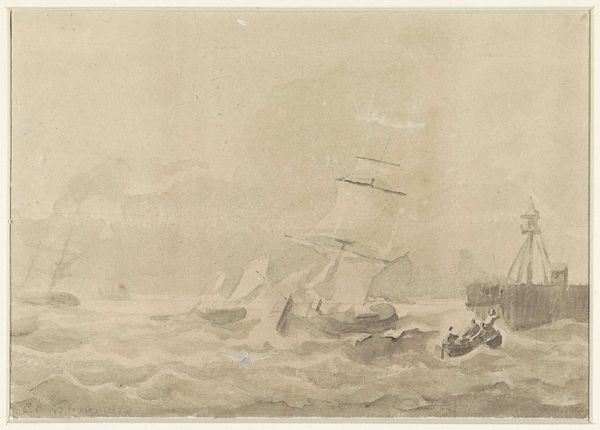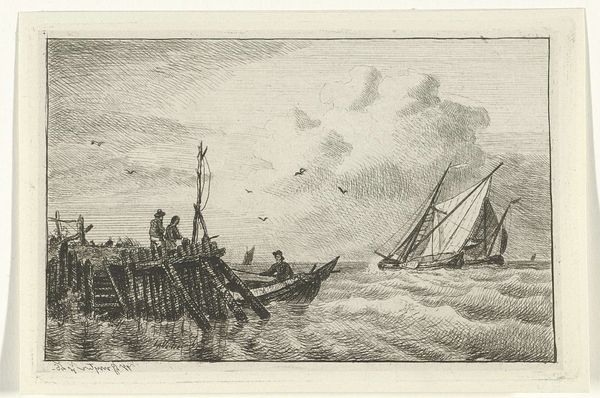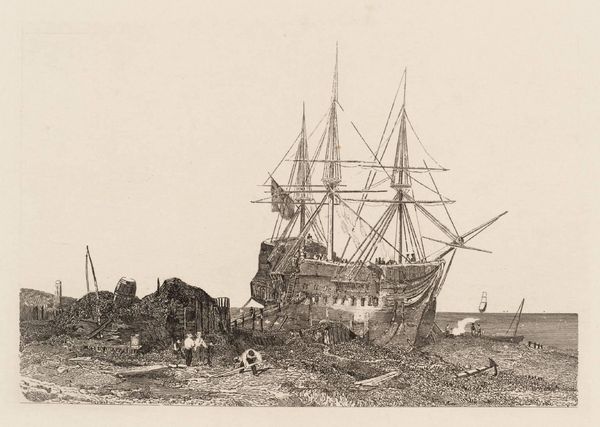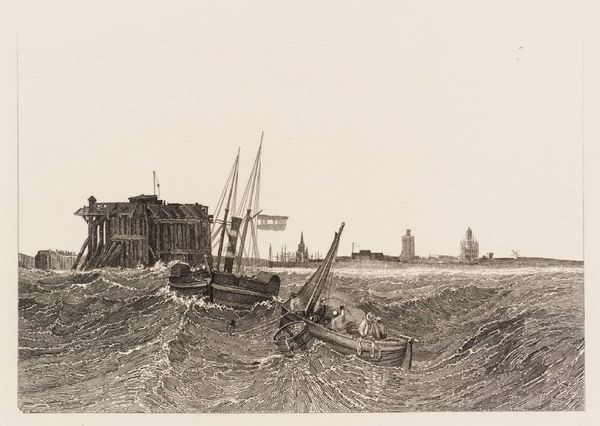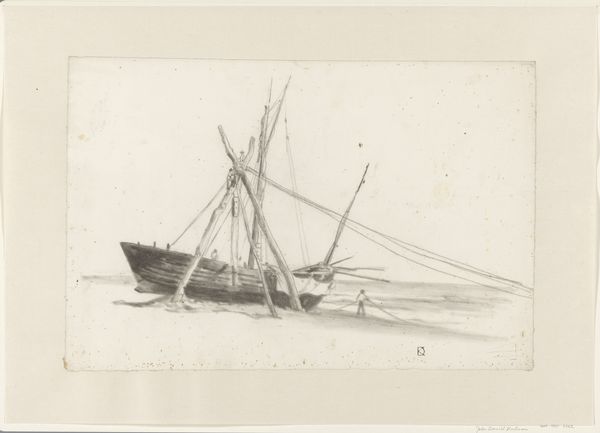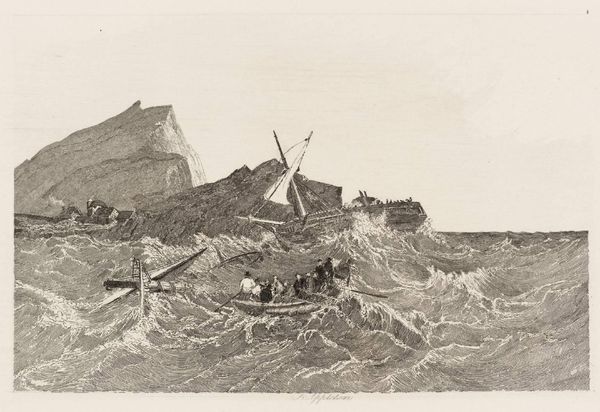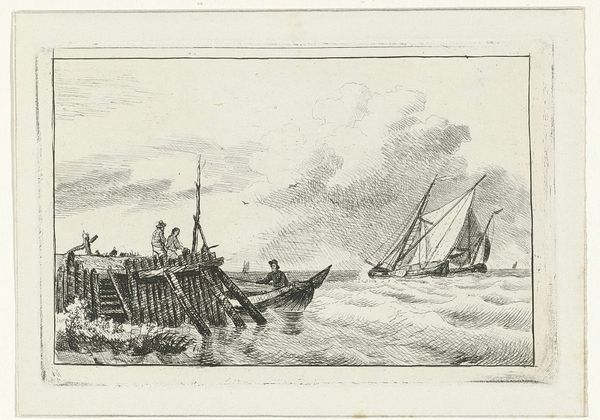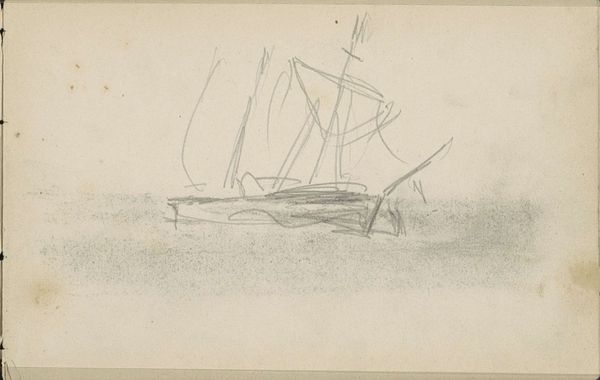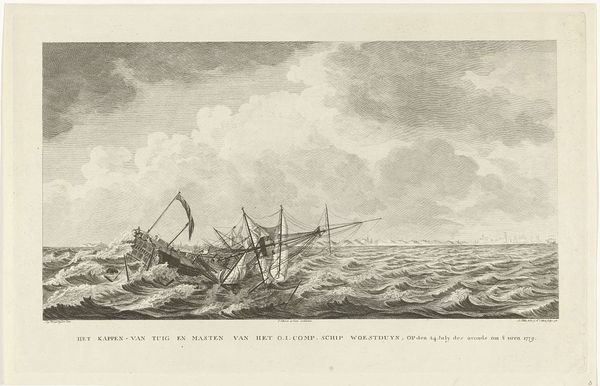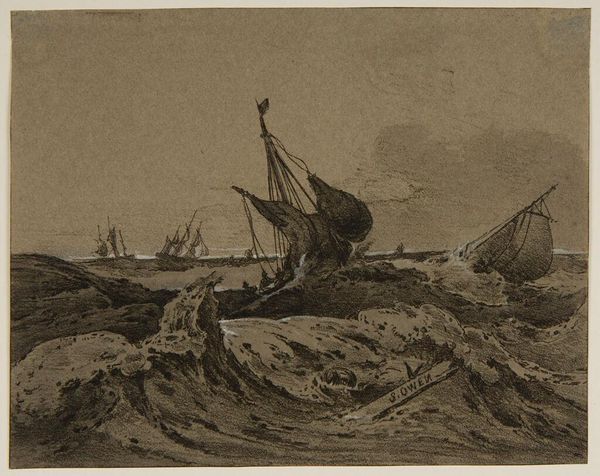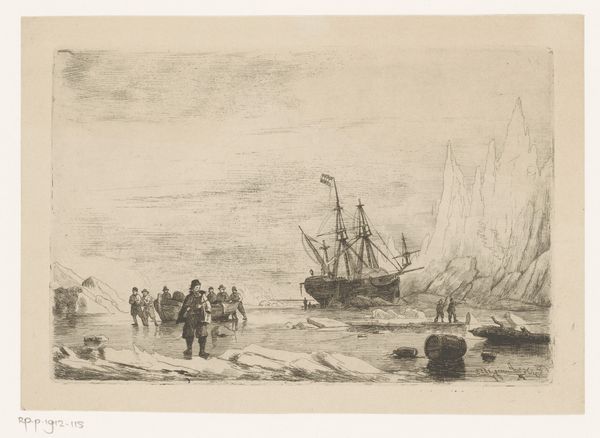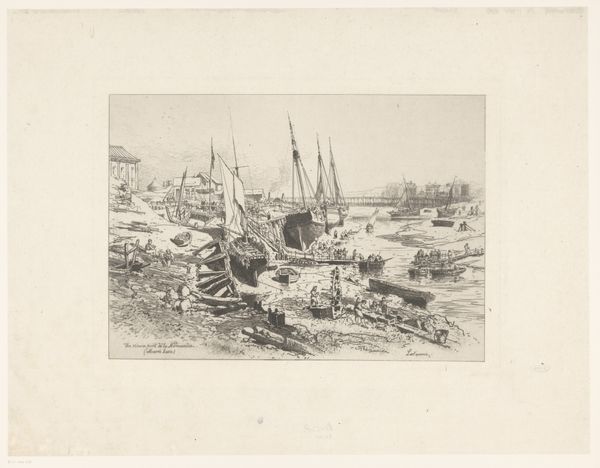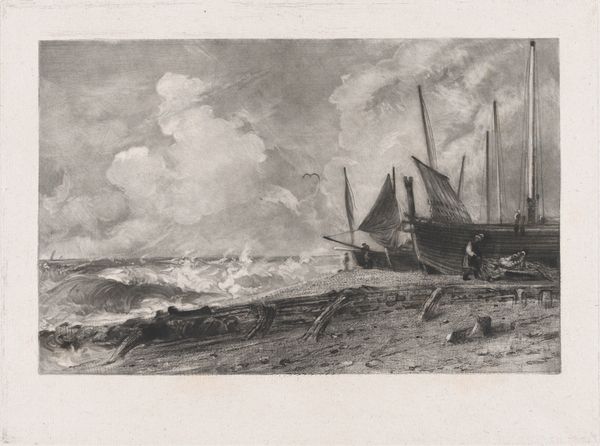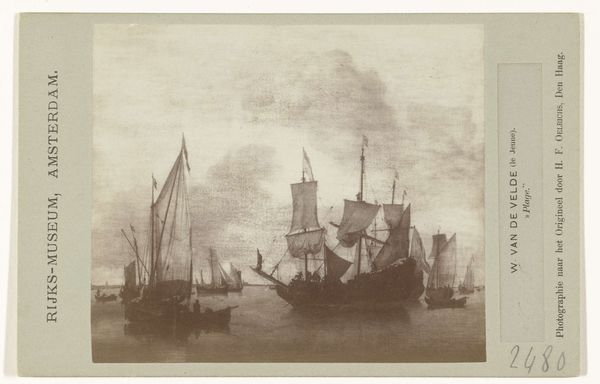
Dimensions: height 277 mm, width 391 mm
Copyright: Rijks Museum: Open Domain
Curator: This is Willem Gruyter Junior’s "Zeegezicht met zeilschepen," or "Seascape with Sailing Ships," created sometime between 1844 and 1846. It’s currently held in the Rijksmuseum. As you can see, it’s an engraving, a type of print. Editor: The first thing that strikes me is the restless energy of the waves, a sort of dance of turmoil. It gives the image a somber yet vibrant quality, despite the relatively limited tonal range of an engraving. Curator: That dynamic ocean surely mirrors the Netherlands' complicated relationship to the sea, which was essential for their trade routes but also presented inherent dangers and required constant vigilance in protecting and expanding territory. Do you think that resonates here? Editor: Absolutely. Ships are frequently potent symbols of aspiration, journeys, and even vulnerability. Here, the smaller sailboats in the foreground look tossed about, contrasting with the larger ship further out, seemingly weathering the storm. Curator: Yes, and consider the solitary figure on the shore. The sea and ships were absolutely intertwined with questions of Dutch national identity. And you know, the Netherlands’ maritime power and influence was built on unequal, and often brutally violent, trade relations with colonized peoples. The sea wasn't romantic for everyone involved, right? Editor: Definitely. In this seascape, I think it's crucial to see how these symbols work in relation to each other – ship, sea, the figure observing—and to unpack them considering Dutch mercantile history. There's also something classically "Dutch Golden Age" in the pursuit of accurate depictions, although this is decidedly after that period. Curator: Precisely. And that historical context offers such a meaningful lens here. An art object is never just the aesthetic image that meets the eye but represents and recreates the historical world in which it came to life, wouldn’t you agree? Editor: Indeed. It allows us to see beyond the immediate aesthetic qualities and grasp the more significant layers of symbolic meaning within the work. Thanks for helping bring that context to the forefront. Curator: And thanks for illuminating how the symbolic language can reflect broader cultural dynamics, creating avenues for us to reflect on histories we must know.
Comments
No comments
Be the first to comment and join the conversation on the ultimate creative platform.
